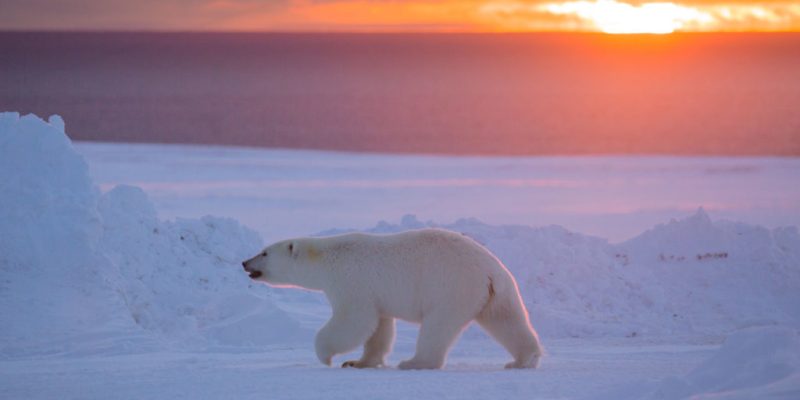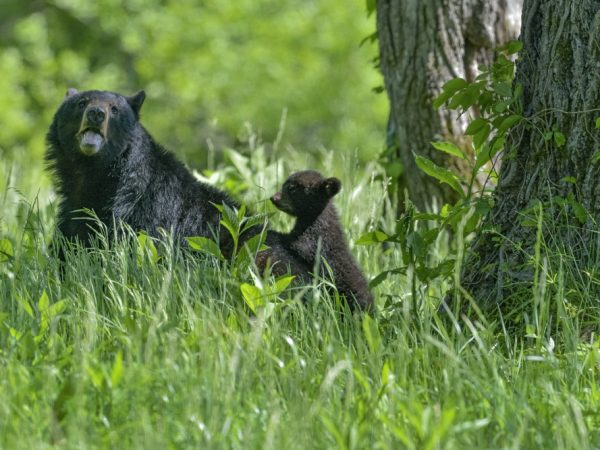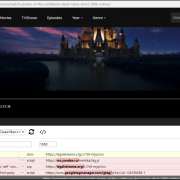Polar Bears in Canada: 10 Incredible Facts You Didn’t Know

Canada is one of the most iconic habitats for the polar bear, home to a vast portion of the world’s polar bear population. Known for their majestic white fur and their resilient adaptation to the extreme Arctic environment, polar bears are fascinating creatures. But beyond their snowy habitat, there is so much more to learn about these powerful animals. In this article, we will dive into 10 incredible facts about polar bears in Canada that you may not have known before. From their incredible hunting skills to their unique physiological traits, these fascinating creatures have many secrets to uncover.
Canada is Home to Over Two-Thirds of the World’s Polar Bear Population
Polar bears in Canada represent a significant portion of the global polar bear population. Approximately two-thirds of the world’s polar bears live within Canadian borders, primarily in the northern territories and coastal regions of the Arctic. This makes Canada an essential country for polar bear conservation efforts, as these iconic animals rely heavily on the Arctic environment to survive.
The Canadian polar bear population is spread across various regions, including the Hudson Bay, the Arctic Archipelago, and parts of the Beaufort Sea. These areas are crucial not just for polar bear survival but also for preserving the broader Arctic ecosystem.
Polar Bears in Canada Are Strong Swimmers
Polar bears in Canada are not just skilled land hunters; they are also excellent swimmers. These large mammals have been known to swim across long distances in search of food or a new habitat. Their thick layer of fat and dense fur help insulate them against the freezing waters of the Arctic.
Studies have shown that polar bears can swim for several miles at a stretch, even in icy waters. In fact, some polar bears have recorded swimming distances of over 60 miles! This remarkable swimming ability is vital as the ice floes they depend on are melting, forcing polar bears to travel farther and adapt to new hunting grounds.
Their Fur is Not Actually White
While we commonly associate polar bears in Canada with their iconic white fur, their coats are actually translucent! The fur appears white because it reflects the sunlight and blends in with the snowy landscape, providing the perfect camouflage. Underneath their fur, polar bears have black skin, which helps them absorb and retain heat from the sun, essential for survival in the cold environment.
This clever adaptation allows polar bears to stay warm in temperatures that often drop to as low as -40°C (-40°F) in the winter months.
Polar Bears Are Excellent Hunters
Polar bears in Canada are skilled hunters, relying on their ability to track seals, their primary food source. They primarily hunt seals that breathe through holes in the ice, such as ringed seals. The polar bears patiently wait by these holes, sometimes for hours or even days, before making their move. Using their keen sense of smell, they can detect a seal’s presence from miles away.
Their powerful paws help them break through thick ice, and their large claws give them an advantage when capturing prey. This predatory skill set has enabled polar bears to thrive in some of the harshest conditions on Earth.
They Can Go Months Without Eating
One of the most astonishing facts about polar bears in Canada is their ability to survive for extended periods without food. This is particularly true during the summer months when sea ice melts, and hunting becomes more challenging. Polar bears rely on fat reserves stored in their bodies to survive during times when food is scarce.
During fasting periods, polar bears can go without food for several months, depending on their fat stores. In some cases, females that are pregnant will fast for up to eight months, relying solely on their fat reserves to sustain them through their pregnancy and hibernation period.
Polar Bears Are Facing the Threat of Climate Change
As a species that heavily relies on sea ice for hunting, polar bears in Canada are at risk due to the ongoing effects of climate change. Rising temperatures are causing the Arctic sea ice to melt at unprecedented rates, reducing the bears’ access to their primary food source – seals.
The loss of sea ice also forces polar bears to travel longer distances in search of food and suitable habitats. This not only puts a strain on their energy reserves but also increases the likelihood of encounters with human settlements, leading to dangerous situations for both polar bears and people.
Their Cubs Are Born Blind and Helpless
Polar bear cubs are born in the winter months, typically between December and January. At birth, they are incredibly small, weighing only about one pound, and are completely blind and helpless. These cubs spend the first few months of their lives in dens created by their mothers, who carefully protect them from the harsh winter conditions outside.
As they grow, the cubs gradually open their eyes and begin to explore their surroundings, relying heavily on their mother for warmth, nourishment, and protection. The bond between mother and cub is strong, and the mother teaches her cubs essential survival skills.
Polar Bears Can Travel Hundreds of Kilometers
Polar bears in Canada are known to cover vast distances in search of food or to find new habitats. Some have been tracked traveling up to 1,000 kilometers (621 miles) across the Arctic. This extensive range is necessary due to the seasonal changes in their environment, especially the melting and freezing of sea ice.
Their ability to roam large distances ensures that they can find suitable areas to hunt and survive. However, the changing climate and loss of sea ice are making it more difficult for polar bears to travel freely, which may impact their long-term survival.
Polar Bears Can Be Dangerous to Humans
While polar bears are not typically aggressive toward humans, they can become dangerous when they feel threatened or hungry. As their natural habitat is shrinking and food becomes more difficult to find, polar bears may venture closer to human settlements. In some cases, this has led to dangerous encounters.
It’s important for communities living near polar bear habitats to take precautions to ensure both human and bear safety. Measures such as bear-proof garbage containers and safe enclosures for livestock are essential in keeping interactions between humans and polar bears to a minimum.
Polar Bears Are Classified as Vulnerable
As of today, polar bears in Canada are classified as vulnerable due to the rapid loss of sea ice and other threats posed by climate change. Conservation efforts are underway to protect polar bear habitats and ensure the survival of the species for future generations.
Various organizations and government agencies in Canada are working to monitor polar bear populations, study their behavior, and implement strategies to mitigate the impact of climate change. Public awareness and international cooperation are key to ensuring that polar bears continue to roam the Arctic for years to come.
Conclusion
Polar bears in Canada are one of the most iconic and resilient species in the animal kingdom. Their ability to survive in extreme conditions, their impressive hunting skills, and their profound adaptations to the Arctic environment make them a true marvel of nature. However, these majestic creatures are facing significant challenges due to climate change and the loss of their sea ice habitat. Protecting polar bears in Canada requires a collective effort to address climate change, reduce human-wildlife conflicts, and preserve their natural environment. By understanding these incredible animals and their needs, we can work together to ensure that future generations will also have the privilege of witnessing the beauty and power of polar bears in the wild.
FAQs
Q1. Where can I see polar bears in Canada?
Polar bears can be seen in several parts of Canada, including Manitoba, Ontario, and the Arctic regions. One of the most popular destinations to see polar bears is Churchill, Manitoba, where guided tours allow visitors to safely observe these magnificent animals in their natural habitat.
Q2. What do polar bears in Canada eat?
Polar bears primarily eat seals, particularly ringed seals. They hunt seals by waiting near breathing holes in the ice, using their keen sense of smell to detect prey from miles away.
Q3. How long can polar bears survive without food?
Polar bears can survive for months without food, relying on fat reserves stored in their bodies. In times of scarcity, they can go without food for up to several months, depending on their fat stores.
Q4. Are polar bears dangerous to humans?
While polar bears are generally not aggressive toward humans, they can become dangerous if they feel threatened or are desperate for food. It is important to take precautions when living near polar bear habitats.
Q5. How can we help protect polar bears in Canada?
Conservation efforts to protect polar bears include reducing carbon emissions to combat climate change, preserving their natural habitats, and supporting wildlife management programs. Public awareness and responsible tourism also play key roles in their protection.
Also read: Aurora Borealis Greenland: 10 Unmissable Spots to Witness the Magic











